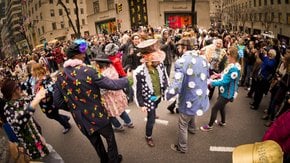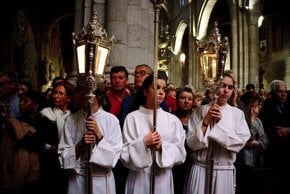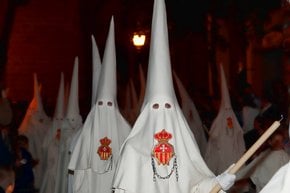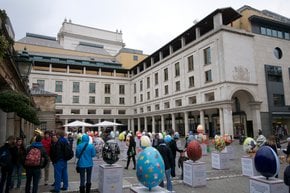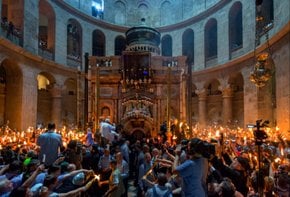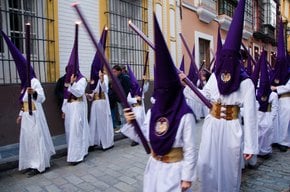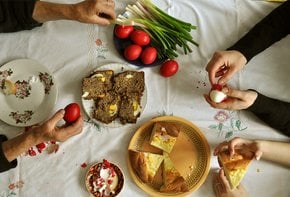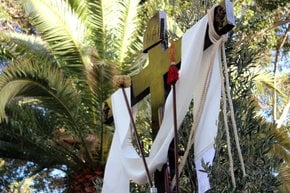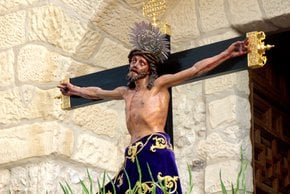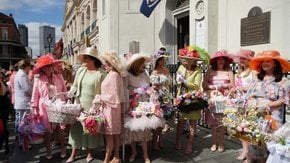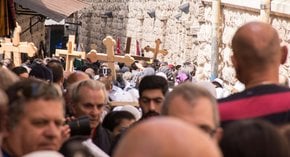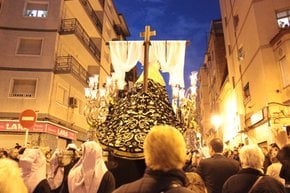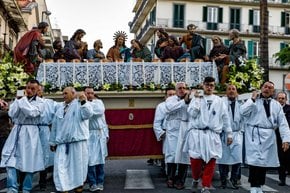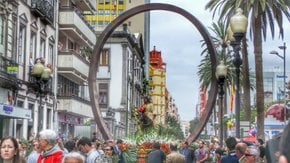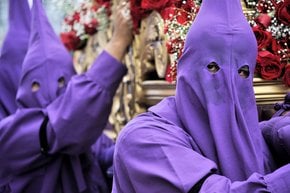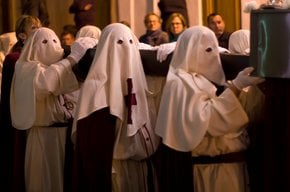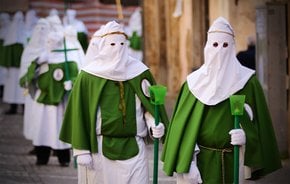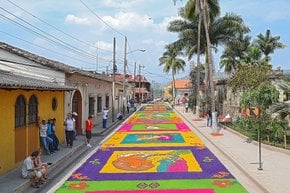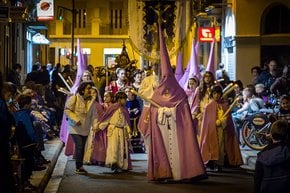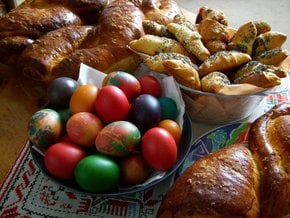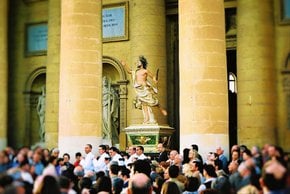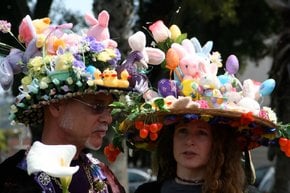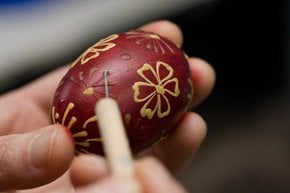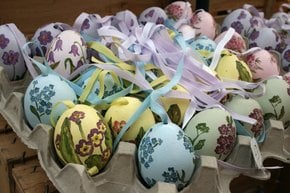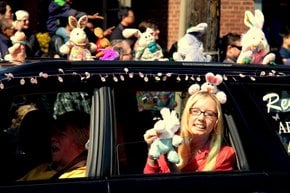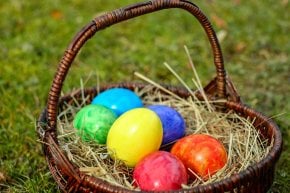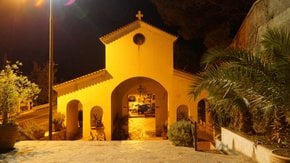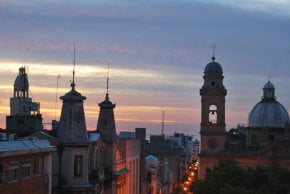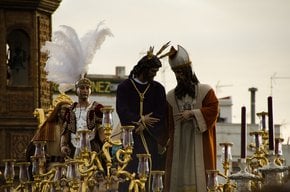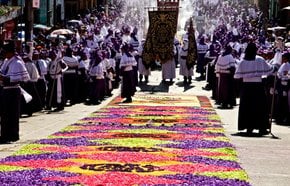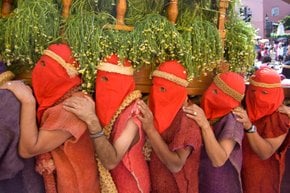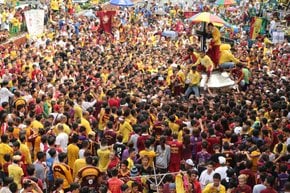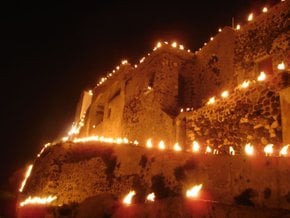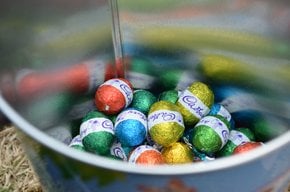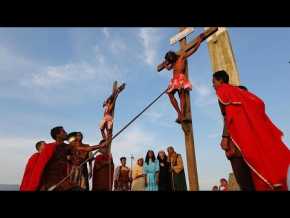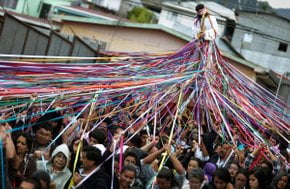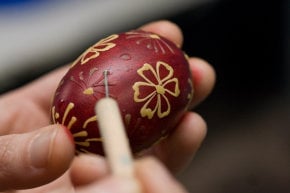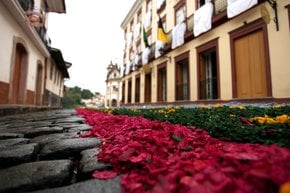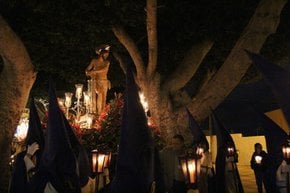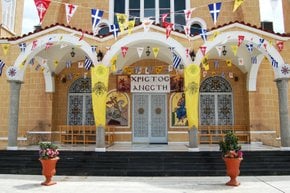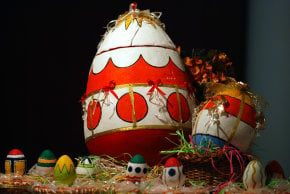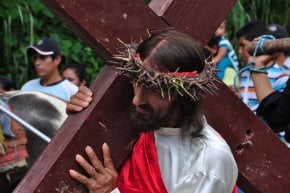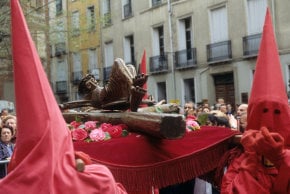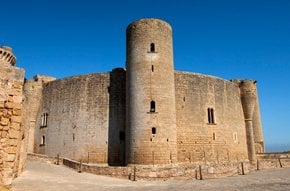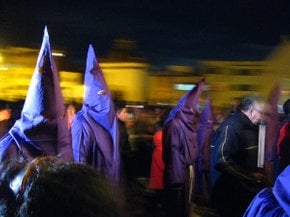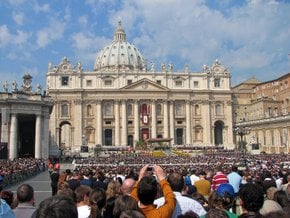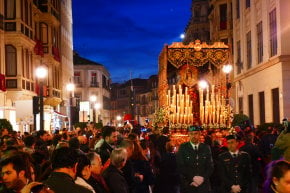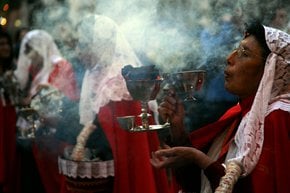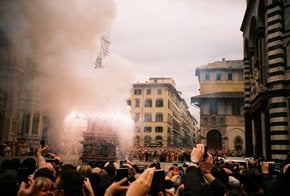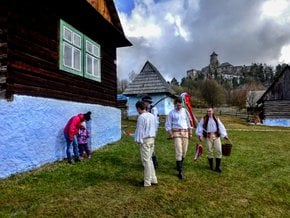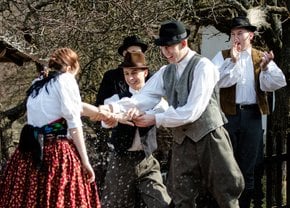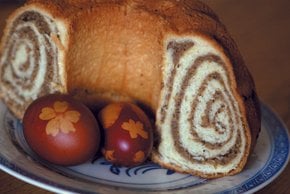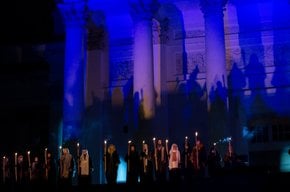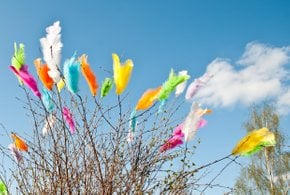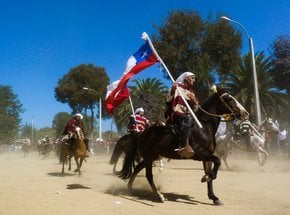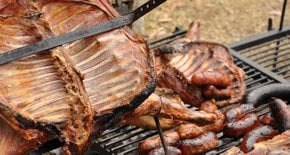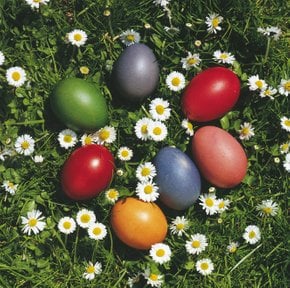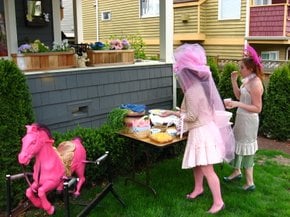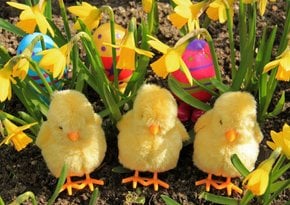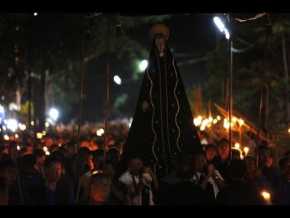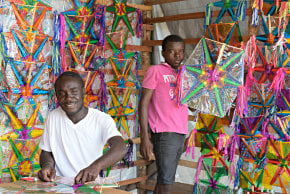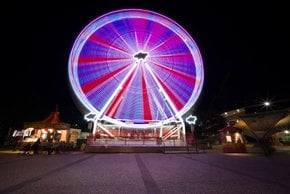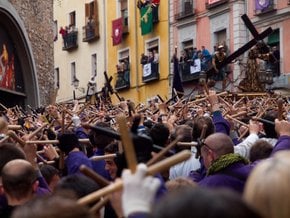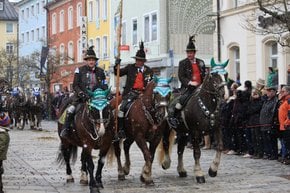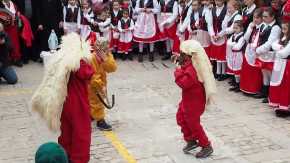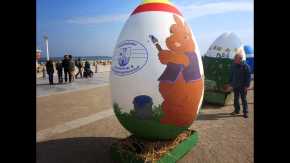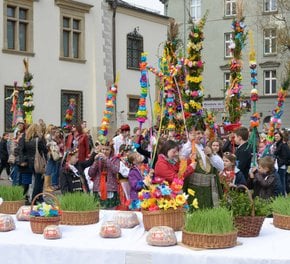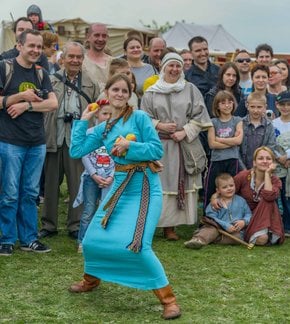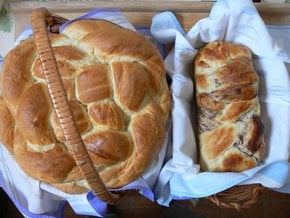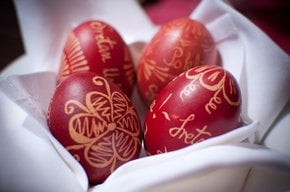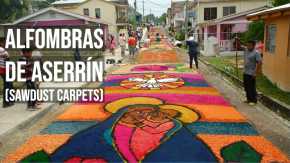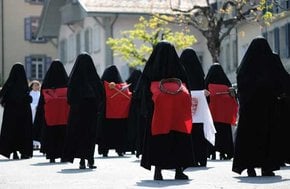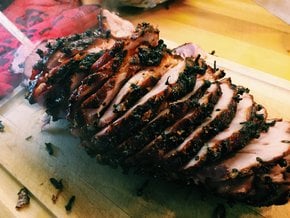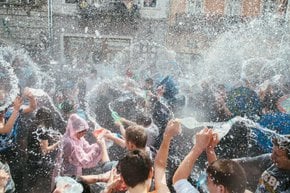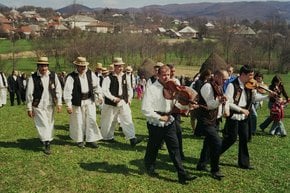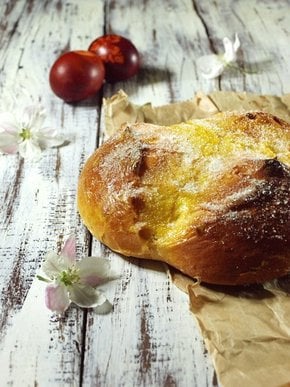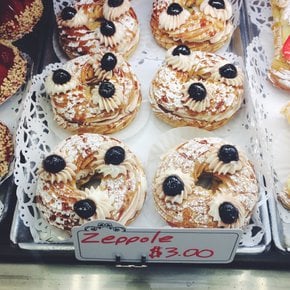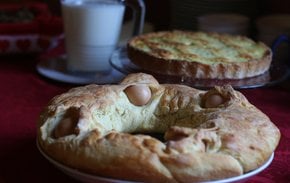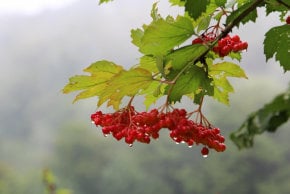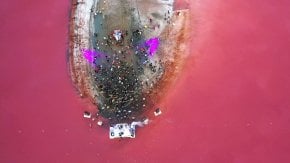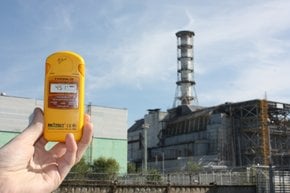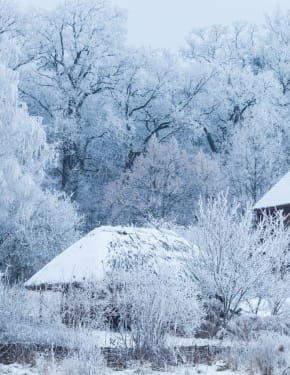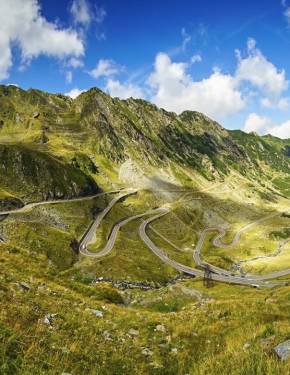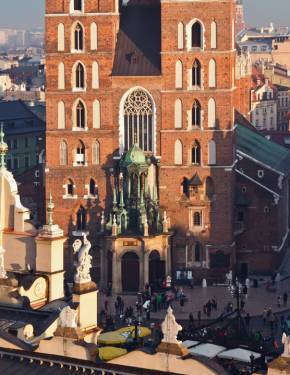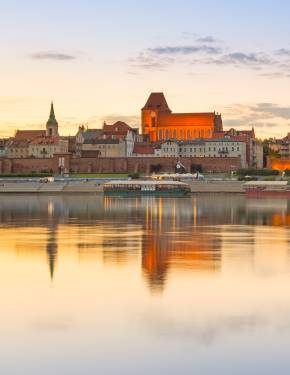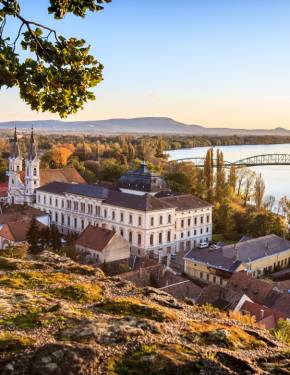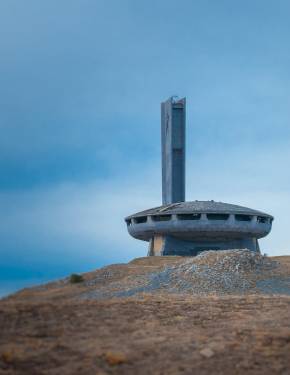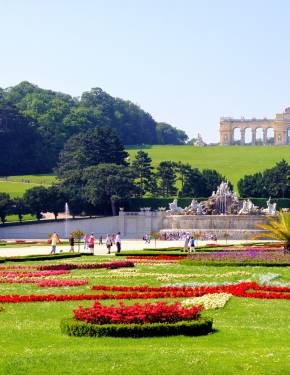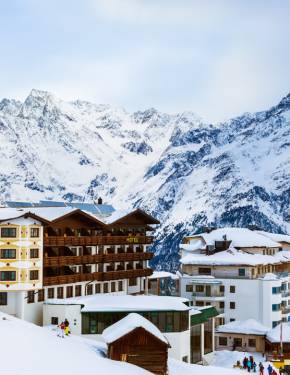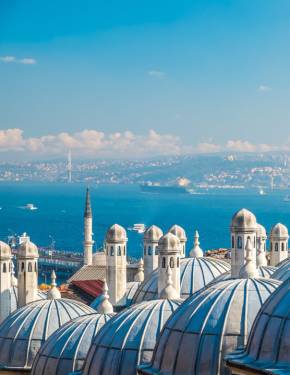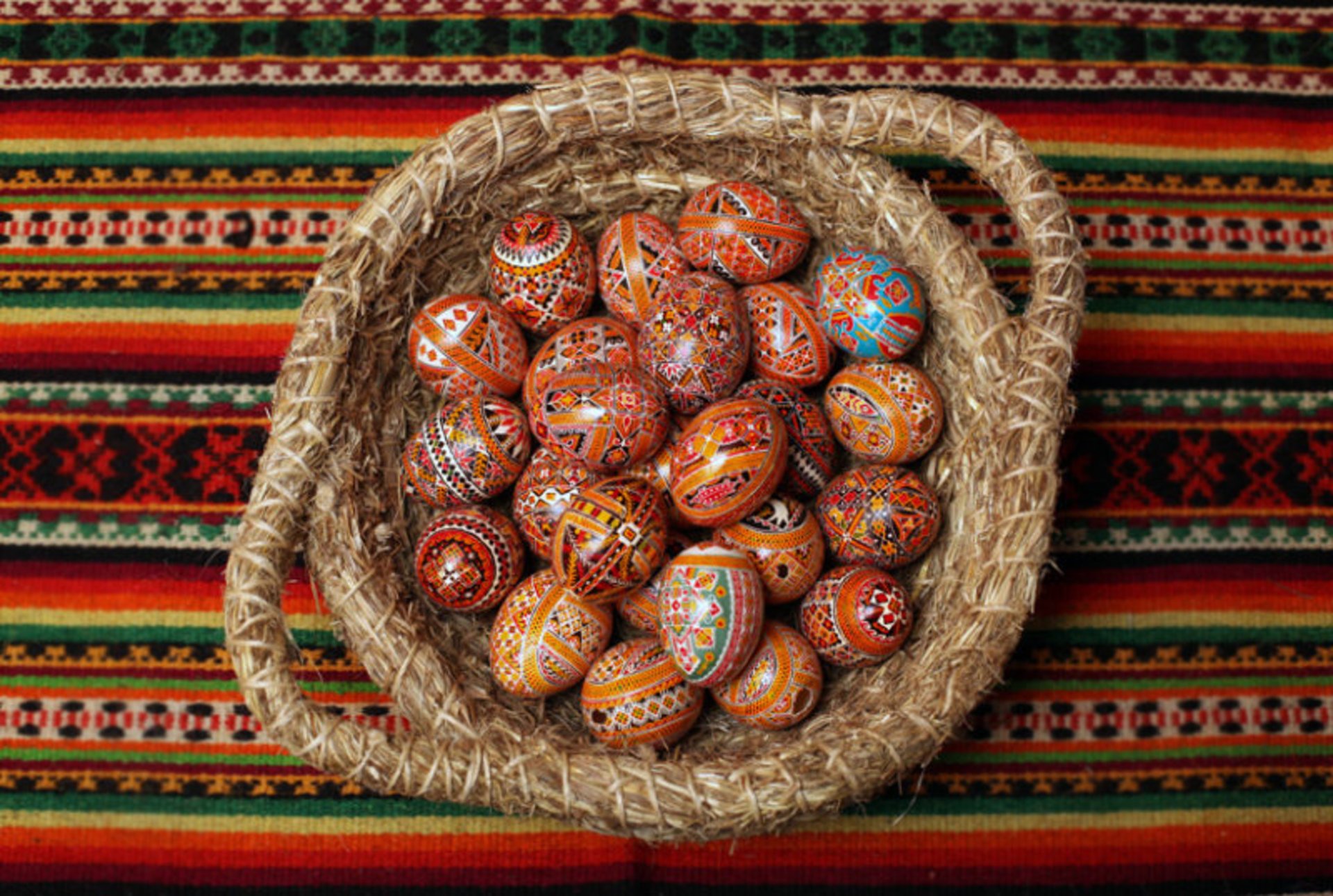

Ukraine, especially its western part, celebrates Orthodox Easter with a swing. Starting from Palm Sunday and well through the Sunday after Easter, you will find an array of events honoring this great feast. Read on to explore the best places to go for Easter festivals and dig deeper into local culture and folklore. Also, find out all about Easter traditions, which embrace Christian practices and pagan rituals.
Easter festivals
The best way to enjoy local Easter traditions, culture, folklore, and food is to attend one of the Easter festivals in outdoor museums. The most popular location in Lviv is the Shevchenkivskyi Hai, while Kyiv has two places to check out—Pyrohiv (Pyrohov) and Kyivan Rus Park in Kopachiv (Kopachov). The festivities usually run during the Easter weekend. At these festivals, you're likely to see youth, dressed in embroideries, get into a walk-around and sing "haivky" or "vesnianky"—traditional songs that welcome spring and new life. Besides, you can see similar performances in churchyards on the Sunday after Easter.
Wet Monday (May 6, 2024)
If you don't mind getting wet, the most vibrant Easter bash is the Wet Monday in Rynok Square in Lviv. On the day coming after Easter Sunday, folks are invited to bring water and pour it on one another without any restrictions, as this ancient rite symbolizes purification. Such a splashy street extravaganza might spread even beyond the downtown. So watch out and make sure to bring some spare clothes just in case you get involved in the water fun.
Pysanka festivals
Lastly, if you're interested in the pysanka tradition of egg painting (read more below), you may visit one of pysanka festivals, held in several locations across central Lviv and Kyiv for nearly a month after Easter Sunday. Make sure to see a festive fair along Svobody Avenue with a huge iconic pysanka displayed in front of the Opera Theatre. Also, take in the displays of decorated eggs and other symbols of Ukrainian Easter at Sofiivska Square, Mykhailivska Square, and Volodymyrskyi Passage in Kyiv. Additionally, visit a small hutsul town of Kolomya in Ivano-Frankivsk Oblast, the famed home of the world's only Pysanka Museum, holding 10,000 different pysankas.
See External Resources below for the official websites, providing contacts, the latest updates, and other essential information about the festivals. Lastly, if you don't fancy crowds, you can go to any village in Western Ukraine and have yourself the most authentic Easter experience.
Easter traditions in Ukraine
The local name of "Velykden" is derived from two words—"velykyi den" or "big day," denoting the importance of the feast. Holiday anticipation starts with the beginning of Lent, 40 days before Easter time. But the true hectic season is the Holy Week, marked with mourning for crucified Jesus and final preparations for Easter. In the meantime, Easter Week has an absolutely opposite vibe of joy and happiness related to Christ's resurrection.
Holy Week (April 28–May 4, 2024)
Palm Sunday refers to the day when Jesus entered Jerusalem, and locals greeted him with raised palm leaves. For this occasion, religious Ukrainians get their "palms" blessed at special church services. But instead of palm leaves, people bring willow sticks, often decorated with dried flowers and herbs. Hence comes the Ukrainian version of the holiday—"Verbna Nedilia," literally Willow Sunday. Finally, Good Friday is the pinnacle of the Holy Week when the statue of crucified Jesus is laid in every church across the country.
Easter bread
Households in Ukraine must be cleaned by Maundy (or Holy) Thursday, as on this day, hosts traditionally bake Easter bread "paska," which is also a more informal way to name the holiday. Every family comes up with a few variously shaped and sized paskas—traditionally, there should be one for each member. Ukrainian women don't spare eggs, milk, and raisins for this occasion. Neither do they limit their time or efforts—one has to knead the dough for at least an hour. That being said, in recent years, lots of bakeries and grocery stores also sell a variety of Easter bread, and many locals take advantage of this.
Easter eggs: krashanka and pysanka
Another crucial tradition is egg painting. Krashanka is a hard-boiled egg painted with natural colorings from onion shells or beetroots. In contrast, pysanka is a raw egg decorated with various symbolic ornaments. Krashanka must be eaten, and pysanka is supposed to protect the household from evil. In ancient times, the crust and yolk of a pysanka had to remain whole, but modern pysankas are also made from either boiled or emptied eggs.
Easter baskets
Ukrainian men also help with Easter preparations—they are responsible for grating horseradish, in particular. When mixed with beetroots, horseradish turns into a local specialty, called khrin, buriachky, or tsvikli. This dish, along with Easter bread, krashankas, and pysankas, goes to the Easter basket. So do other products, such as ham, sausages, butter, salt, and others. The basket is covered with a neatly embroidered towel. Also, lots of Ukrainians wear embroidered Ukrainian "vyshyvankas". Depending on the region, some parishes get their Easter baskets blessed at the daytime Saturday services, while others stick to an ancient tradition of nighttime Sunday services. Anyways, the goodies from the Easter basket are not to be eaten until Easter Sunday morning after the Easter Service.
Easter Sunday (May 5, 2024)
For many Ukrainians, Easter Sunday begins at Midnight Easter Liturgy. At this time, the merriments begin—church bells ring throughout the country, while churchgoers greet each other: "Khrystos Voskres!—Voistynu Voskres!" This wonderful phrase means "Christ is Risen!—He is Risen indeed!" Families assemble together, bringing their paskas and krashankas as a gift. An unmarried girl is supposed to try 12 different paskas to get married soon. Colored eggs are also involved in mocking competitions—the participants hit each others' eggs to find out whose is stronger. The owner of the intact egg can expect good luck. Horilka is also on the festive table, even though this strong spirit drink isn't put into the Easter basket.
We could have included so much more about Easter traditions in Ukraine, but you should come and see it all with your own eyes. If you're into Easter in Ukraine, plan your Easter trip and book your stay in advance, as the season promises to be rather busy. The map below showcases the best accommodations near the places listed in the article.

